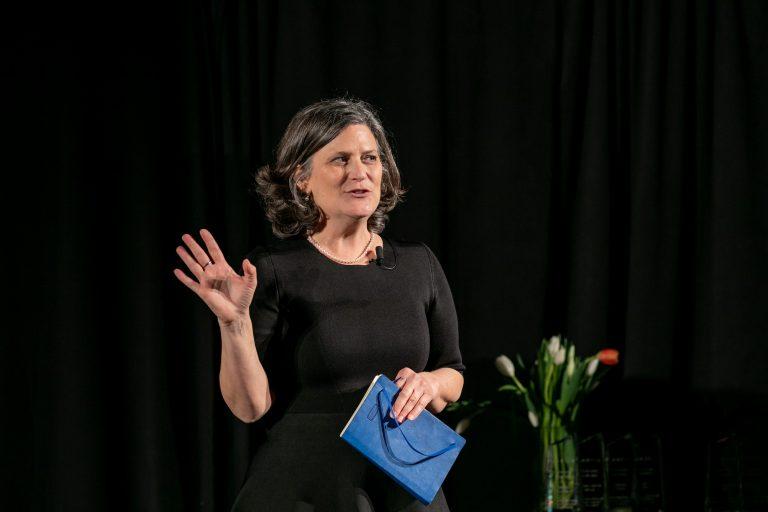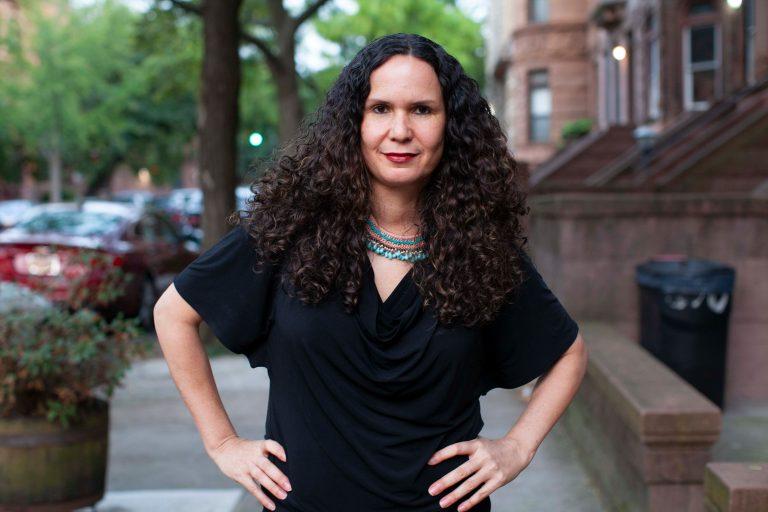Astia Is Transforming the Way We Fund Businesses
Astia is transforming how businesses are funded–providing capital, connections, and guidance that fuel the growth of highly innovative, women-led ventures worldwide. Astia recently launched a $100M early-stage venture fund to address the extraordinary disparity in funding for companies that include women in founding or executive roles.
Cisco has invested in early-phase funding to help Astia develop a tech-enabled platform to source and screen companies applying to Astia for investment, and work to remove bias from the investment process. Astia Connect also enables data capture and analysis to drive Astia’s thought leadership, and communication between Astia entrepreneurs, advisors, and investors. The impact so far? Last year alone, Astia screened companies seeking over $1 billion in capital for investment consideration. One of the many companies to find investment success through Astia’s process is Goalsetter, an investee company in Astia’s portfolio. With Astia’s lead investment, Goalsetter closed an oversubscribed seed round of $3.9M, and is now growing.
“Only three percent of venture capital is directed toward women-led companies, despite evidence that, on average, women-led companies achieve higher returns on investment than male-led companies. Toward Cisco’s goal of powering an inclusive future for all, we are proud to support Astia, whose combination of capital, advice, and networks levels the playing field for high-growth potential, minority and women-led companies,” said Charu Adesnik, deputy director of the Cisco Foundation, and manager of the economic empowerment investment portfolio for Cisco and the Cisco Foundation.
We sat down with Sharon Vosmek, CEO of Astia. Sharon is well-regarded worldwide for her opinions, research, and commentary on women leaders’ importance to innovation and high-performing entrepreneurial companies. We also spoke with Tanya Van Court, the CEO of Goalsetter. Tanya previously led education and entertainment initiatives with Nickjr.com and Noggin.com. Now she leads the first woman-owned financial technology company to provide financial education to kids and teens.
Can you explain more about racial inequality and gender inequality in investing?
Sharon: The reason we know that gender and racial bias exists is simply by looking at the numbers. In Astia’s 20-year journey, venture capital has averaged three percent of investment into women CEOs. A recent Project Diane report found that 0.64 percent of venture capital has been directed towards Black and Latinx women since 2018. At Astia, we have seen firsthand how intersectional bias (whether conscious or not) affects funding: Black and LatinX founders in our portfolio take 245 days, versus the 161 days we typically see to close financing, and some require more than 60 introductions to investors, versus the typical amount of about five introductions.
The other thing that drives inequality is that prior wealth, or private assets, often determines who can afford to embark upon entrepreneurship. We know there’s a historical imbalance in the United States related to race and gender, and ownership of assets.
The exciting thing about focusing on solutions within the innovation economy is that entrepreneurship is the fastest path to creating a more equitable economy. When women and people of color are founders of companies, they’re in the executive suite and on the board. Innovation economy is also the fastest path to job creation. Suppose we can make it a more inclusive and more equitable ecosystem. In that case, we can translate that wealth creation and job creation and opportunity creation more broadly because it’s the right thing to do, but equally because it’s smart to do for the economy and investment returns.
Can you share more about the history of Astia’s relationship with Cisco and how it has enabled you to scale?
Sharon: Our founder is Cate Muther, a former senior marketing officer at Cisco. Cate saw the potential of women, and there was a set of strong women leaders at Cisco. But when she looked more broadly at Silicon Valley, she saw that Cisco was an exception rather than a rule.
We see our role as so much more than just investors. We are valuing women as leaders so that they are there to lead the company and lead the next generation of companies. As an organization, the exciting thing is to have a foundational partner like Cisco, who also joins us in the various stages of our journey. Over the past 20 years, our actions result in the success of these companies and the success of the women within these companies. In several forms of Astia, Cisco has written generous grants to create the change we seek.
We see investment as a mechanism for change, and what Cisco has done is funded a platform that enables us to identify high potential investment opportunities without bias. Through Cisco’s most recent funding, Astia was able to develop a platform to increase communication between Astia entrepreneurs, advisors, and investors. That is revolutionary in venture capital, and it is largely Cisco’s funding that has brought that to us.
Can you share about the impact Astia’s investment has had on Goalsetter?
Tanya: Before we met Astia, we had been fundraising unsuccessfully for nine months. When we met Astia, they said, “we believe in you,” and “we believe in what you’re doing,” and “we can help you get the right investors at the table to help fuel your growth.” I felt like they were a part of my team and could bring all of the skills and experience, and knowledge they had in this venture space that I didn’t have.
Not only did they come to the table with the expertise, but they made calls on my behalf and took meetings with me. If an investor dropped out, they said that these things happen and moved forward. And that is so important because they breathed life into this funding process for the company and me. Within four months of Astia saying yes, we had significant investors.
Now we are in a position where we have major partnerships with major organizations across the country. We are moving mountains, and we are recognized amongst the Black community and major financial institutions as one of the leading fintech companies for kids.
Can you explain the importance of financial education for kids and teens?
Tanya: There’s a study that demonstrates that kids who have savings accounts in their name are six times more likely to go to college. And then there was a companion study done that showed that those same kids were four times more likely to own stocks by the time they’re adults.
The data and the statistics tell us that getting a savings account into the hands of every kid across America can fundamentally change their outcomes. And so, that’s what we are trying to do.
Financial education and financial literacy are essential to understanding key tenets of growing wealth in this country. But they are not taught in school systems or at home. African Americans, by 2053, are projected to have a negative net worth, Latinos, by 2073, are projected to have a negative net worth. And yet, these large swaths of our country are never being taught how to build wealth.
We are helping our children understand the language of investing and growing wealth instead of just the language of budgeting, saving, or spending. We’re transforming what this next generation can look like in this country. And we are challenging the predictions around 2053 and 2073. We believe that we can reverse the curse of those years if we can get enough kids in our country signed up for a savings account with a fun, game-based, culturally relevant financial literacy curriculum.
What did Astia see in Goalsetter that made you want to invest? And how do their results reinforce Astia’s model?
Sharon: I want to highlight this is true across the portfolio, but in particular with Goalsetter. We at Astia tend to invest in what we call real-world solutions. If you look at the problems we face today, we’re living in this incredibly connected world that is dealing with the climate crisis, a pandemic, food insecurity, a distribution of wealth problem that is phenomenally problematic for economies and individuals. These are problems that need an all-hands-on-deck approach. We invest in opportunities, like Goalsetter, where there happens to be a hugely inclusive team that understands the unique needs and unique opportunities of serving a community that banks have historically not served well.
For example, Blacks and African Americans in America pay as much as four times as much for banking services as their White counterparts. Over the life of an investment, that can be substantial. That can be the ability to purchase a home, go to college, or create wealth and assets to pass to the next generation. Tanya’s solution addresses the real-world problem of financial inequality, lack of inclusion, and lack of ability to gather equity and wealth. If we can be a small player in getting her to market with that opportunity, you can see why’d we invest. We believe that, as investors, it is our call to action. We will create the world we seek where women are equal participants in positions of power, equity, and influence.



